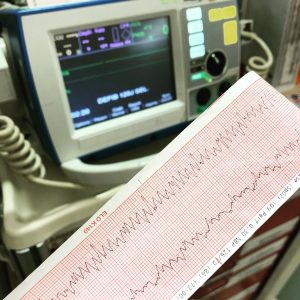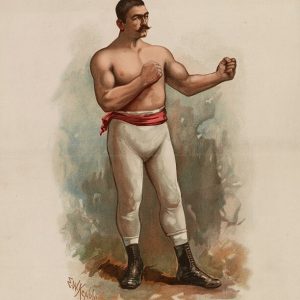Want to experience the greatest in board studying? Check out our interactive question bank podcast- the FIRST of its kind here: emrapidbombs.supercast.com
Author: Sean O’Sullivan, MD
Peer reviewed by: Blake Briggs, MD
Introduction
SCAPE is a sub-type of acute decompensated cardiac failure- the worst case of acute heart failure syndromes- the one most likely to get our attention as EM Physicians because of its dramatic, life threatening presentation.
Mechanism: A SUDDEN onset of acute shortness of breath caused by rapid redistribution of intravascular fluid into the alveolar space. It is NOT FLUID OVERLOAD.
Note: Boards will describe this clinical presentation, as a SUDDEN onset of dyspnea, not a gradual onset of pitting oedema, weight gain, or worsening dyspnea. It is caused by acutely elevated cardiac filling pressures, which drives intravascular fluid from the pulmonary capillaries into the alveoli.
Left ventricular and left atrial dysfunction predisposes to an increase in sympathetic tone, leading to a catecholamine burst. This sympathetic surge further increases heart rate, reducing diastolic filling time. Increased sympathetic tone also aggravates the permeability of pulmonary capillaries.
Further downstream compensatory mechanisms, such as activation of the renin-angiotensin-aldosterone system, increased systemic vascular resistance, and pulmonary oedema related hypoxia further worsen cardiac function. An appropriately described viscous cycle ensues
PRESENTATION. Sudden onset of dyspnea. This presentation underlines the importance of history, e.g. from patient, EMS, or caregiver. These patients will arrive in extremis, with non-rebreather mask or CPAP mask on. HTN and tachycardia are common. You may find rales/crackles, cold skin, and JVD.
Accelerate your learning with our EM Question Bank Podcast
- Rapid learning
- Interactive questions and answers
- new episodes every week
- Become a valuable supporter
Testing is at best incidental, as SCAPE is a clinical diagnosis which requires rapid interventions on an emergent basis.
CXR may show acute pulmonary oedema, but can be NORMAL, due to the rapidity of onset.
The usual standard labs BMP, troponin, EKG, BNP are all typically ordered but none are definitive in diagnosing SCAPE. You cannot wait on labs to treat these patients.
Bedside echo can be helpful to rule out tamponade.
DDX: not many things present like this one. Do think about pericardial effusion, aortic dissection
Management is aimed at:
Increasing cardiac output
Decreasing afterload
Decreasing preload
Note: None of these aims requires Diuresis. Fluid overload is not the problem.
More than 50% of these patients present euvolemic. Fluid redistribution needs to occur.
1. NIPPV (Bipap): Bipap, if applied early in patient’s disease course reduces intubation rates (NNT 8). It decreases work of breathing, improves gas exchange, and decreases afterload and preload.
Start at 6-8 for PEEP, but move up aggressively to 12-14. The need is to push fluid out of the alveoli and back into the intravascular space where it belongs- as quickly as possible. PEEP, plus the interventions below, should enable you to avoid intubation, but it must always remain an option.
2. Concurrent administration of Nitroglycerin is essential to correct the abnormal SCAPE pathology. There is no point in starting with low dose Nitro, as this will only induce venodilation. Higher doses are required for arterial dilation. In addition, high dose nitroglycerin increases renal blood flow and cardiac output.
Remember also that one sublingual nitro tablet contains 400 mcg, one nitro spray contains the same amount, and Nitro patches come in 200, 400, 600 and 800 Mcg sizes. It is perfectly ok to employ one of these routes of delivery while you are setting up your BiPAP and waiting for your Nitro infusion to ramp up. Bolus dosing of nitroglycerin (1-2 mL pushes every 3-5 minutes) had no increased episodes of hypotension and can be a neat skill to utilize in an acute setting instead of a slow infusion. This is assuming nitroglycerin comes in 100-200 mcg/mL mixes).
If Nitro ineffective you may add Nitroprusside.
3. IV Ace inhibitor: SL captopril or IV enaprilat are fast acting agents and work on the aforementioned renin-angiotensin-aldosterone system to continue to reduce afterload. They have been found to not cause hypotension in this setting, and they decrease LOS in the ICU. Enalaprilat initial dose is 1.25 mg IV push.
4. Furosemide: fourth line option. It will probably be asked for by the folks upstairs, but it is not an early ED intervention. Furosemide helps with preload reduction, but its slow onset in 30-120 minutes make it ineffective early on, and in the initial period it actually raises afterload and reduce CO in the first 90 minutes. Not good.
If these aggressive interventions are rapidly applied, it will cause a quick improvement in your patient. Often you can facilitate early BiPAP termination and blessedly avoid intubation.
SCAPE patients need to be differentiated from those patients who present with a slower development of symptoms, sometimes over days, who will have pitting edema, weight gain, hypoxia, some tachypnea, JVD, but are not in extremis, and for whom diuretics are an important part of management. Diuretics are counterproductive in SCAPE, and may induce hypotension, as SCAPE patients are not fluid overloaded, in fact often quite the opposite.
If you diurese SCAPE patients this may induce hypotension, which you may blame on your Nitro drip, and cancel it, to your, and your patient’s, regret.
Following stabilization, the search for potential underlying causative factors and precipitating triggers should be instituted. Such as M.I., acute valvular dysfunciton, renal failure, Takotsubo cardiomyopathy, etc.
References
1. Levy P, Compton S, Welch R, et al. Treatment of severe decompensated heart failure with high-dose intravenous nitroglycerin: a feasibility and outcome analysis. Annals of Emergency Medicine. 2007 Aug;50(2):144-152. DOI: 10.1016/j.annemergmed.2007.02.022.
2. Nohria A, Lewis E, Stevenson LW. Medical management of advanced heart failure. JAMA, (5):628-640. MED: 1182970.
3. Cotter G, Kaluski E, Moshkovitz Y, Milovanov O, Krakover R, Vered Z. Pulmonary edema: new insight on pathogenesis and treatment. Curr. Opin. Cardiol., (3):159-163. MED: 11357010
4. Agrawal N, Kumar A, Aggarwal P, Jamshed N. Sympathetic crashing acute pulmonary edema. Indian J Crit Care Med. 2016;20(12):719–723. doi:10.4103/0972-5229.195710



